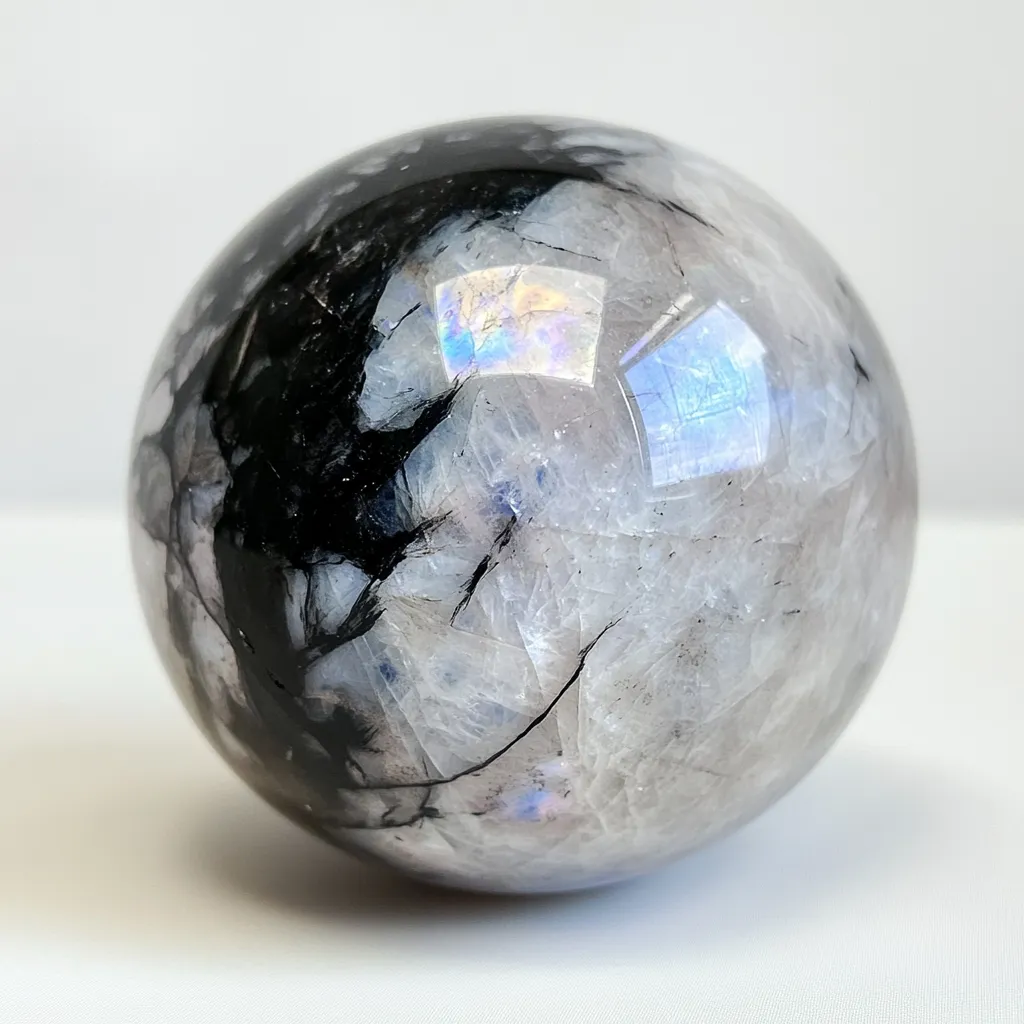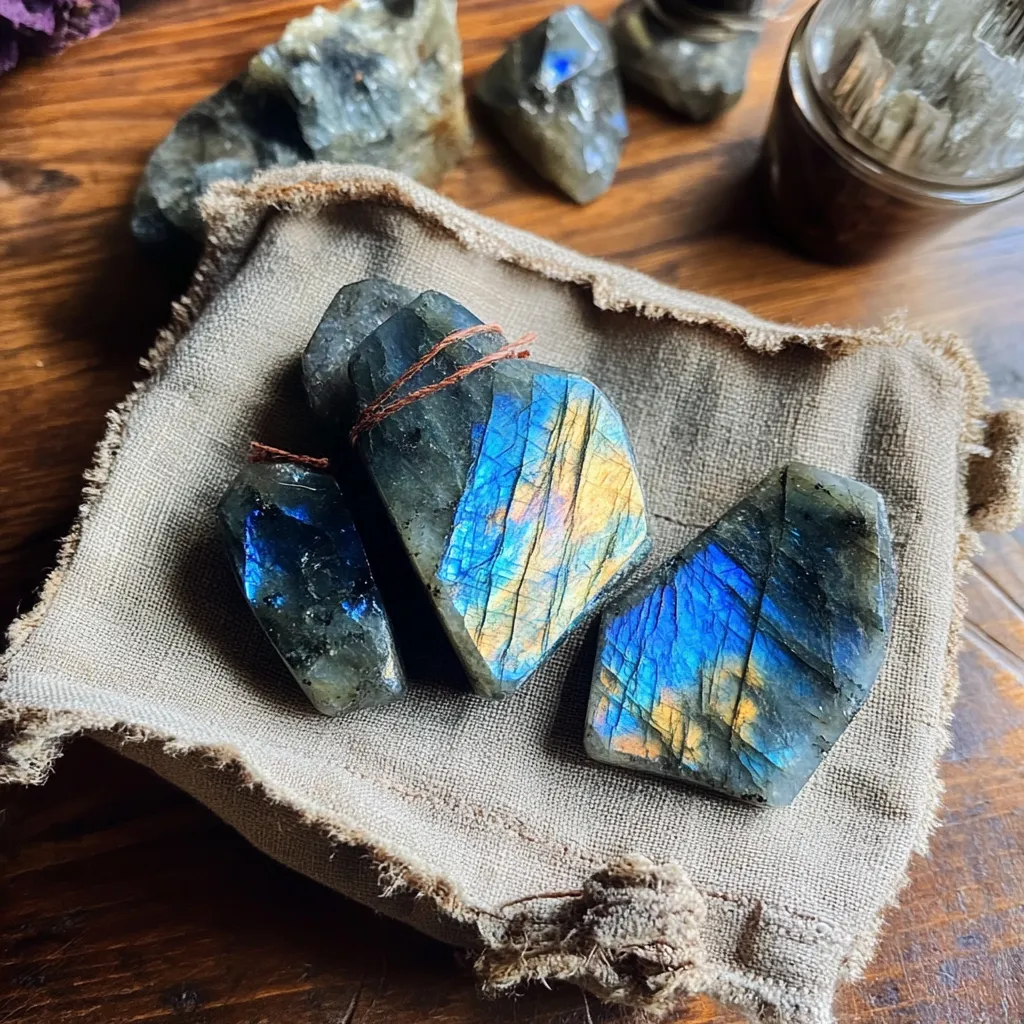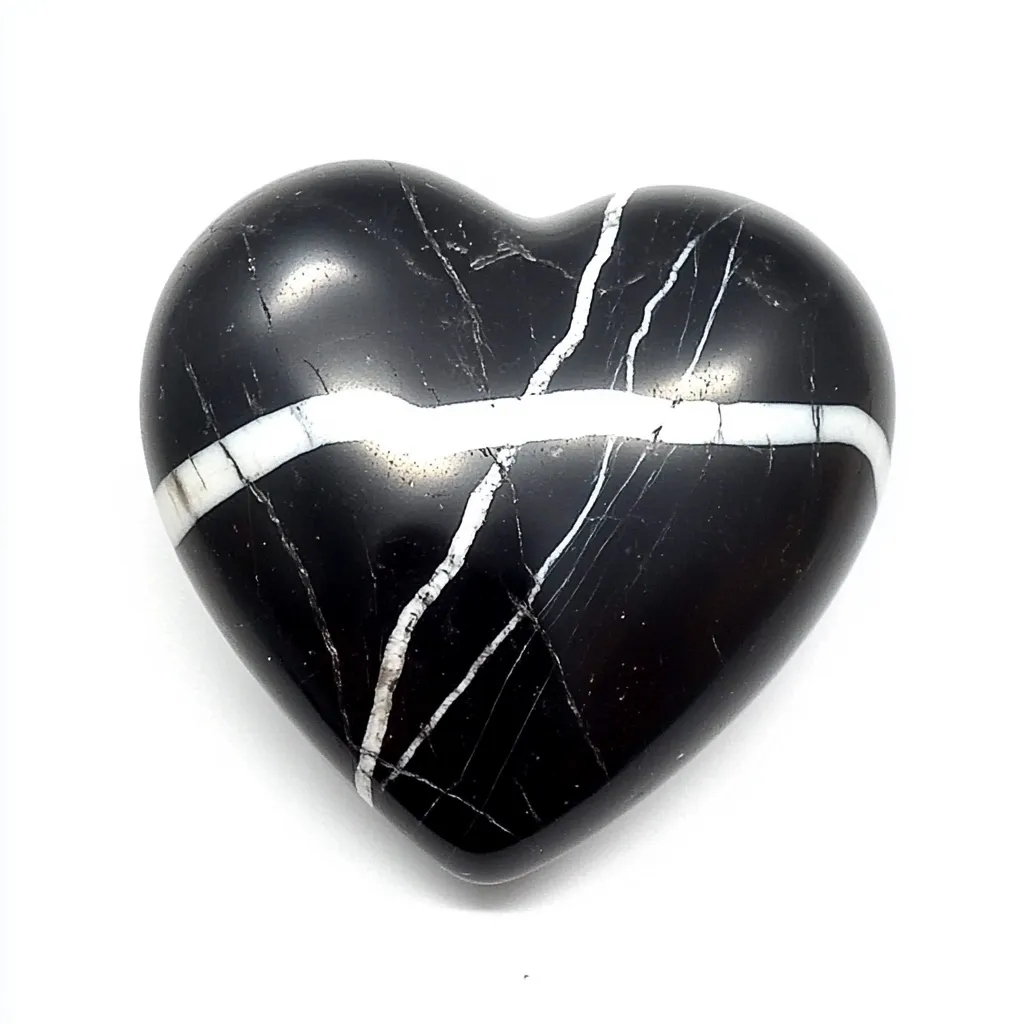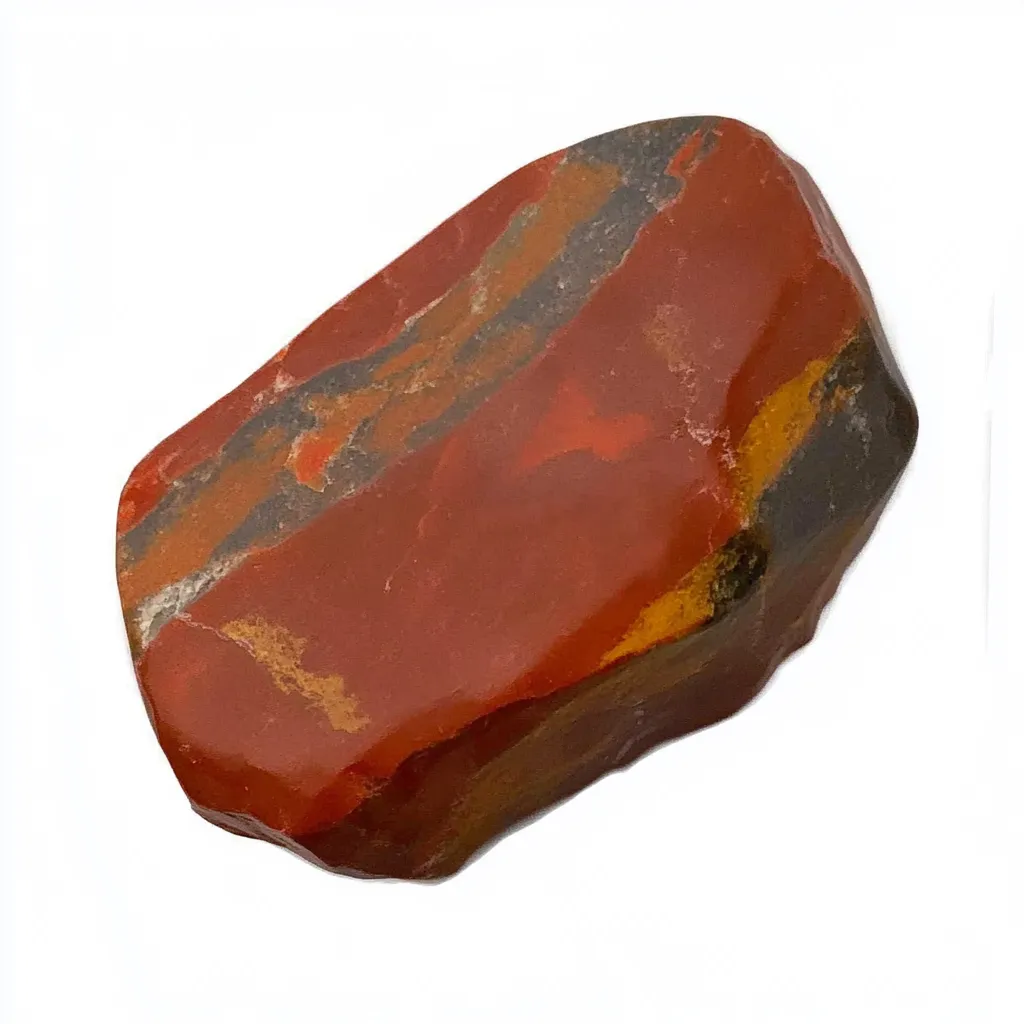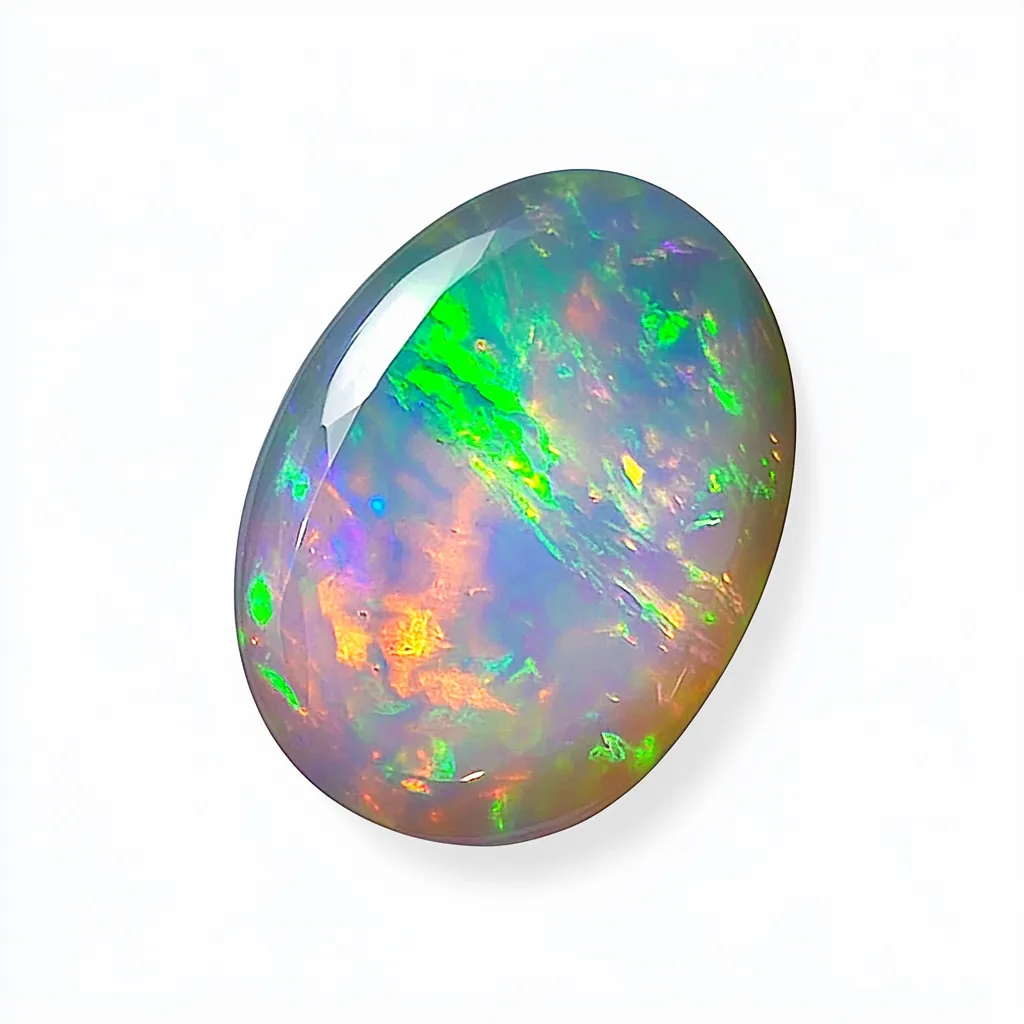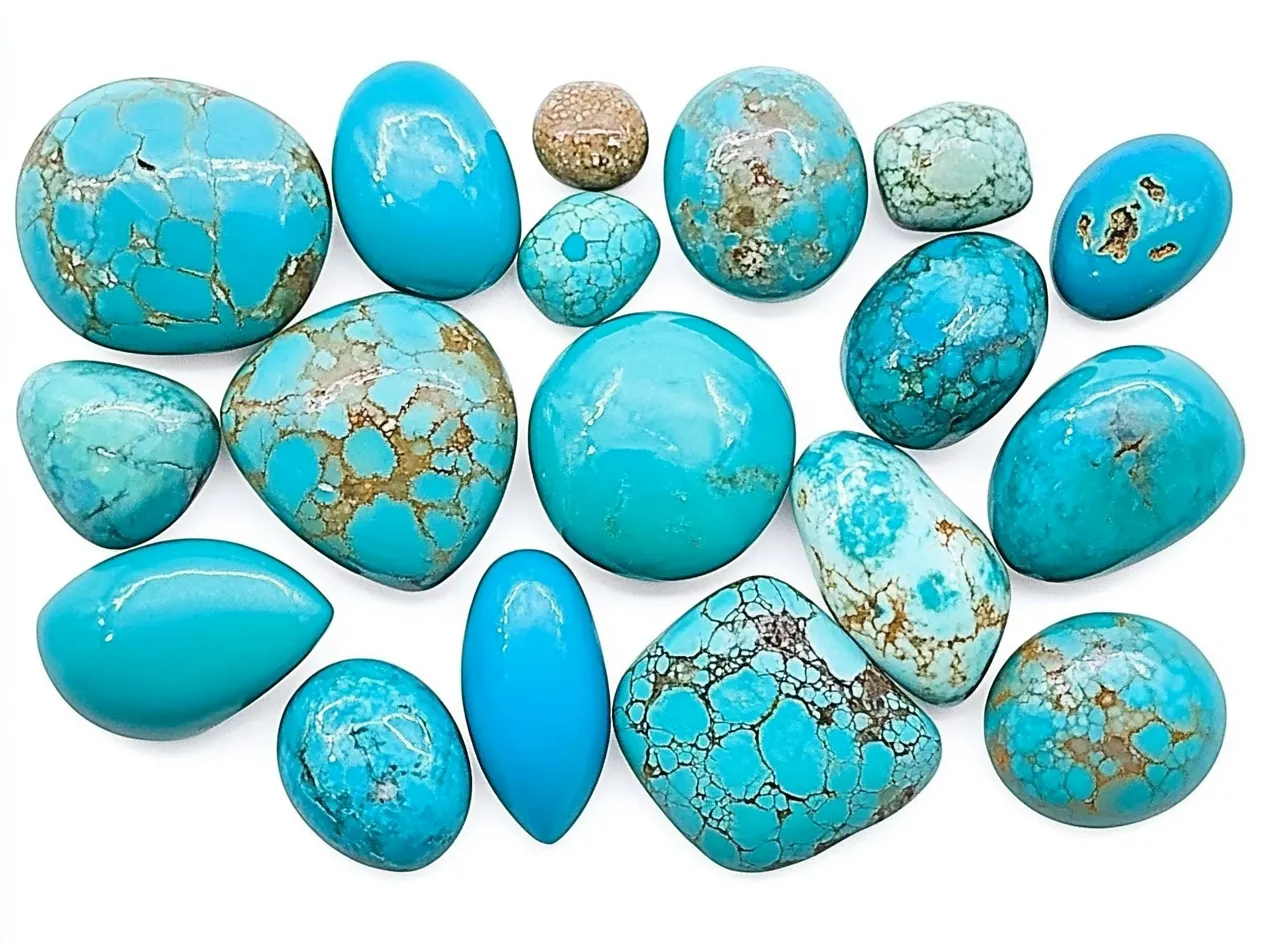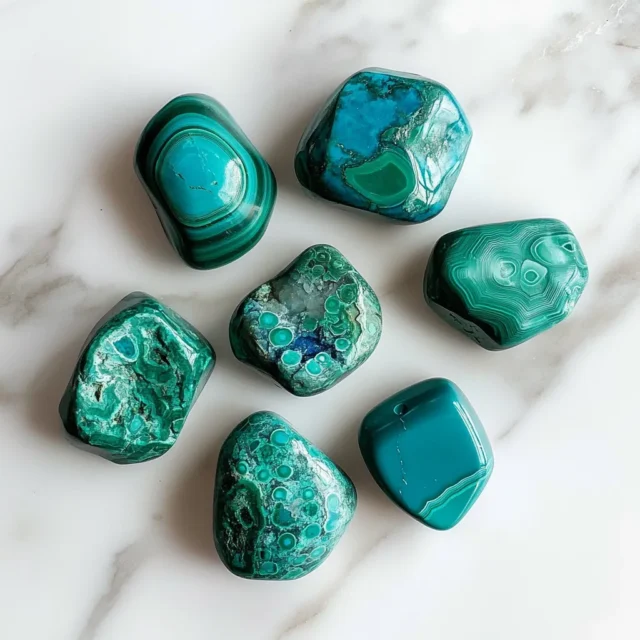

Malachite Pronunciation
The word “Malachite” is pronounced as follows: MAL-uh-kite.
Hardness
Malachite is 3.5 to 4 on the Mohs hardness scale, meaning it is a relatively soft stone compared to quartz or sapphire. This softness makes it easy to carve into decorative objects or jewelry, but also means malachite is prone to scratches and should be handled with care.
If you’ve ever donned a malachite ring, you may already know how quickly it can pick up little dings from daily use. That’s why many artists choose to affix malachite in anything but an exposed, rough-and-tumble setting—the stuff of rings and bracelets. Malachite prefers a more sheltered life in inaccessible places or on pendants. But wear it there long enough, and that malachite will eventually soften and darken. And when it does, don’t be too alarmed.
Table: Malachite Hardness Comparison and Jewelry Suitability
| Stone | Mohs Hardness | Jewelry Suitability |
|---|---|---|
| Malachite | 3.5 – 4 | Best for pendants, earrings |
| Quartz | 7 | Suitable for all jewelry |
| Sapphire | 9 | Extremely durable for all uses |
Lustre
Malachite has a lustre that can almost be described as silky, especially in comparison to that of very similar materials that occur in the same veins, such as azurite. The ‘swirly’ malachite seen in some specimens can more properly be described as banded, with clear transitions from one section to another that sometimes alternate between flat (green) and pendulous (conchoidal) surfaces. When viewed under the right conditions (not too much or too little light), malachite can appear “alive” with vivid, mirror-like displays that can also be described as “darkly optical” or “opal-esque” in character.
This metamorphosis of natural crystals into malachite reminds me of nature’s own transformation—like a forest after rain, suddenly alive with vibrant colors. It is no wonder that malachite has been treasured since ancient times, not only for its beauty but also for its power, and that it has frequently found a place in remarkable jewelry and art, from Egyptian amulets to Russian palace columns.

Crystal System
Malachite is a member of the monoclinic crystal system, forming fibrous or botryoidal (grape-like) structures. Unlike the sharp, geometric lines of quartz or garnet, malachite’s formations tend to be rounded and even bubbly, giving it an almost organic look.
A few collectors pursue radial clusters or stalactite-like formations of malachite, which show its crystal habits in their full glory. Such specimens are not just uncommon; they also betray the very environment in which malachite grows, almost exclusively in the oxidized zones of copper deposits—a pretty mundane existence for a mineral that nonetheless has a really dynamic crystal growth process.
Table: Crystal System Comparison
| Mineral | Crystal System | Common Formation Shape |
|---|---|---|
| Malachite | Monoclinic | Botryoidal, fibrous, radial |
| Quartz | Hexagonal | Prismatic, hexagonal |
| Garnet | Cubic | Dodecahedral |
Etymology
The soft stone of Malachite is a basic copper carbonate mineral. It forms in the copper deposits at oxidation zones, typically alongside other secondary copper minerals like azurite. Even within the malachite family, varying conditions of temperature, pressure, and humidity during mineral formation can give rise to a range of textures, colors, and appearances among malachite specimens.
Long ago, writing made its way onto rocks and stones, proclaiming their greatness. Those words reverberate still today. Even ancient writings bestowed another name upon malachite: a stone of transformation, both in form and in meaning. Despite its softened reputation, malachite has borne the brunt of use across millennia and holds an even bigger role in ancient and modern societies.

Location
Most malachite comes from the Democratic Republic of the Congo, but significant deposits are also found in Russia, Australia, Namibia, and the southwestern United States. Specimens from each place have their own distinct textures, colors, and formations.
For instance, historically mined in the Ural Mountains, Russian malachite was once so plentiful that it was utilized to adorn entire palace interiors—envision huge columns and elaborate tabletops. Today, malachite from the Democratic Republic of Congo rules the market, frequently identifiable by its bright, rich greens and banded patterns.
When sourcing malachite jewelry or specimens, check to find out where they originated. The color and clarity can be affected by where the malachite was mined. But even more important to many buyers, especially those who are conscious of not wanting to funnel money into corrupt or harmful operations, is the question of how the malachite was mined.
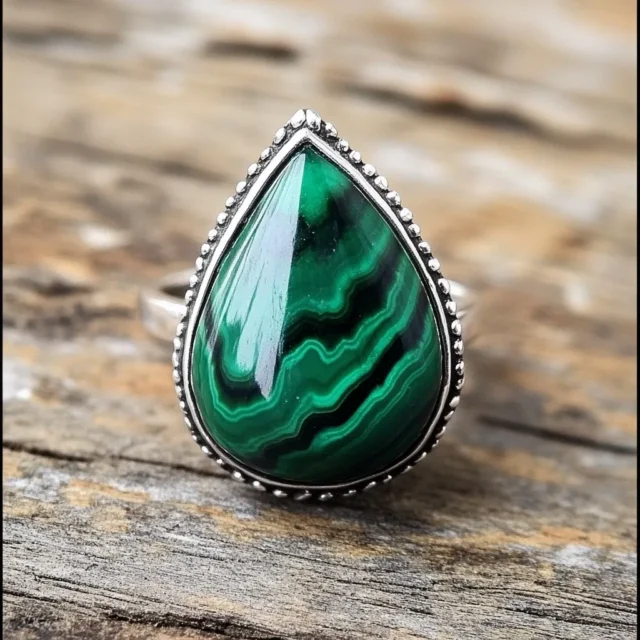
Meaning and energy
Often referred to as the “Stone of Transformation,” malachite is thought to offer profound emotional healing, personal growth, and protection. Practitioners of crystal healing consider it one of the most effective stones for working with the heart chakra.
However, malachite possesses a potent, almost aggressive energy. Historically, people used the stone to create various protective amulets and talismans, despite its beauty. One common malachite myth suggests that the stone absorbs negative energy. Serge, could you please let me know if that sounds accurate? Or if you prefer, feel free to share an alternate story. And by the way, what about grounding with malachite?
Consider malachite your brutally frank buddy who makes sure you’re hearing the stuff that’s vital for you to hear—whether or not it’s what you want to hear. It’s heavy, but that’s the motive behind its intensity. It pushes you towards growth.
No matter if you are attracted to its rich hue or its emotional significance, malachite is a lot more than just a pretty rock—it’s a token of transformation, honesty, and perseverance.

Varieties of Malachite Stone
Malachite isn’t simply one stone; it isn’t one stone at all—it’s a symphony of greens and swirling bands of natural artwork, a copper deposit unearthed from the depths of the Earth after oodles of centuries. Malachite in hand, one will find fibrous forms with silky textures, bubbly varieties that resemble surfaces in Blossom Time, and structures more akin to stalactites and cave formations. Hold such pieces and you do indeed carry a bit of earthy artwork with you.
Experts in malachite identify two main types: rough and smooth. Rough malachite, they say, sends out stronger energies—its vibrations are more potent. Smooth malachite, often fashioned into bewitching baubles, is a sturdy kind of medicative stone. It looks lovely and works better than you’d think. The most collectible specimens, the ones with the highest cartographic resolution, come from Russia; they appear in almost any book on minerals.
Types of Malachite Stone
| Type | Description |
|---|---|
| Rough Malachite | Emits stronger energy, raw surface, used for energetic work or display |
| Smooth Malachite | Polished, suitable for jewelry, thought to have more subtle healing effects |
Ancient Myths
Myths about malachite are as colorful as the stone itself. Known as the “Stone of Transformation” in ancient Egypt, many royal women, particularly those expecting children, wore it for its purported protective properties. It’s an
In Greek mythology, malachite was connected to Venus, the goddess of love, who was thought to open hearts and attract affection. Meanwhile, Russian folklore cautioned that the magic of malachite, particularly the legendary “Malachite Box,” which is believed to grant visions of the future, could only be wielded by those with pure hearts. That may sound a bit silly, but such tales express humanity’s long-standing reverence for this green gem.

Physical Malachite Stone Healing Properties
Malachite is commonly referred to as the “stone of change,” and numerous holistic healers swear by its physical healing attributes. It is said to support detoxification, especially in connection with liver function and circulation, and some even use it to relieve menstrual cramps or promote easier labor. This property reflects malachite’s ancient association with female energy.
Malachite’s high copper content may explain some of these claims. Although unproven, many have long believed that copper-based stones have anti-inflammatory properties. El paso and wearing a malachite—no alternative therapy enthusiasts insist this is a popular method for treating anyone suffering from arthritis. Remember, though—malachite should never be ingested or placed in water, as its nagging toxicity in raw form can lead to all kinds of health problems.
Potential Physical Benefits of Malachite
| Alleged Benefit | Explanation |
|---|---|
| Detoxification support | Often linked with liver and circulatory system |
| Menstrual & labor relief | Used for cramps and childbirth support, especially in female-centered energy |
| Anti-inflammatory effects | Believed to stem from its copper content |
| Arthritis pain relief | Popular in crystal healing for joint and muscle discomfort |
Emotional malachite stone’s healing properties
From an emotional standpoint, malachite serves as a mirror—it brings hidden fears to light. Have you ever felt that you were in a repetitive emotional pattern? Malachite is said to push us into the uncomfortable space of facing our truth and, hopefully, breaking the pattern.
During a transition in her career, I once gave a friend a small heart of malachite. She later told me that the stone had helped her to finally leave a toxic job and pursue something that made her happier and more fulfilled.
Even if the malachite wasn’t the thing that catalyzed her to do so, I think it’s awesome that something I gave her, which had been simply and sincerely meant, could serve as a kind of tool or token that helped my friend make that important and brave change.

Chakra-malachite stone has healing properties.
Chakras correlate with malachite, most commonly with the heart chakra, that sacred bridge between the physical and the spiritual. Balancing this energy center with malachite is said to bring about empathy, an uncommon and underrated superpower; self-love, the root of all love; and forgiveness, the elixir that brings about peace and harmony in human relationships.
Nonetheless, certain practitioners utilize malachite for purposes beyond those already listed. They employ it, as mentioned above, for eons in the past and present, to activate the solar plexus chakra (especially when emotional blockages tied to self-worth or personal power are at issue). You might ask, can one stone serve two chakras? That’s a challenging yes.
Consider holding malachite while meditating. Place it over your heart or upper abdomen and let it send its green energy waves into you. Pay attention to how your body might resist or ripple with emotion. Both responses are normal and part of the journey.

Questions and Answers
Further Insights on Malachite
Malachite and Azurite
Malachite and azurite frequently occur together in nature, forming fabulous blue-green mineral specimens that look like they belong in an art gallery. These two copper-based minerals are chemically distinct yet geologically linked.
Azurite offers a deep, dark blue hue; malachite, vibrant, swirling greens. When they form in the same rock, the result is a visual masterpiece known as azurmalachite. This weird and wonderful natural pairing is not just beautiful. It is a geologic clue. Where you find azurite and malachite together, you are almost certainly standing over rich copper deposits. Collectors rave about these fabulous specimens.
Table: Characteristics of Malachite and Azurite
| Property | Malachite | Azurite |
|---|---|---|
| Color | Vibrant green | Deep dark blue |
| Chemical Composition | Copper carbonate hydroxide | Copper carbonate hydroxide |
| Common Occurrence | Often found with azurite | Often found with malachite |
| Collector Appeal | High visual appeal, banded texture | Deep blue color, stunning crystals |
| Indication of Copper | Yes | Yes |
Imitation Malachite
Even though it’s easy to identify real malachite with its striking bands of color and that vibrant green, it hasn’t stopped the market from being saturated with imitations. Usually, manufacturers create imitation malachite by dyeing plastic, glass, or resin to mimic the real material. Those who buy it may think they’ve procured a stunning piece of malachite, but they’re really getting something that doesn’t have the heft, coolness, or texture of a real stone. And some of that banded resin is making its way into fashion jewelry.
Malachite Stone Price
Malachite’s price can vary greatly depending on the piece’s quality, size, and source. Malachite at its most natural can cost as little as $10 per piece. But if you want something with more visual panache, you’re likely to pay $100 or more for polished, high-grade malachite with the near-vertical visual depth and wow factor that these specimens can deliver. And if you want jewelry-grade malachite, especially if you want it set in a piece with some finely colored sterling silver or gold, be ready to raise that ante even more.
Table: Malachite Price Range and Factors
| Type of Malachite | Approximate Price | Key Factors Influencing Price |
|---|---|---|
| Natural rough malachite | $10 and up | Size, origin |
| Polished high-grade | $100 or more | Visual depth, banding, quality |
| Jewelry-grade malachite | $200 and up | Metal setting, craftsmanship, clarity |
Copper Malachite
Copper malachite describes gemstone specimens that contain visible inclusions of copper or that formed directly in zones rich in copper. This occurrence is not wholly unexpected; after all, malachite is a copper mineral. It forms when the copper in a deposit weathers and the metal-containing solutions seep through fractures and voids in the rocks (a process called supergene enrichment). Some stones are also rich in chalcocite. This looks like a layer of what is essentially pure copper that runs through the stone. Copper malachite is finding its way into jewelry settings as, really, a kind of collector’s piece.
Malachite Stalactite
One of the rarest and most captivating mineral formations is malachite stalactites. They form in the size and shape of elongated icicles, but unlike the other kind of stalactite formation, which occurs in caves, these happen over thousands of years when mineral-rich water drips through copper-laden rocks. The formations are mesmerizing; even when you know they are just layers of the copper carbonate malachite, it looks like they have grown, like a plant or something alive. In the photo, which I took at the Virginia Museum of Natural History, you see a piece with a shallow basin at the top, which must always be there if water is to continue dripping and making the stalactite grow. Through the rare bug—and by rare, I mean it only happens to copper minerals—probably introduced in a scorching period of the distant past, you see the astonishing interior of the formation.

